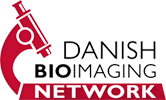Interesting science that could change the design of light microscopes and give new possibilites.
The Nobel Prize in chemistry 2017 attributed to the development of Cryo-EM
The Nobel Prize in Chemistry 2017 was awarded to Jacques Dubochet, Joachim Frank and Richard Henderson “for developing cryo-electron microscopy for the high-resolution structure determination of biomolecules in solution”.
Link: https://www.nobelprize.org/nobel_prizes/chemistry/laureates/2017/
The Nobel Prize in Chemistry goes to the developers of Cryo EM
Here is the official news that the Nobel Prize in Chemistry goes to the inventors/developers of Cryo Electron Microscopy. The Nobel Laureates are Jacques Dubochet, University of Lausanne, Switzerland, Joachim Frank, Columbia University, New York, USA and Richard Henderson, MRC Laboratory of Molecular Biology, Cambridge, UK.
Link: https://www.nobelprize.org/nobel_prizes/chemistry/laureates/2017/
Exciting news about the future production of high quality objective lenses
It has now been shown that there is an easier and cheaper way to produce high NA lenses than by hand polishing.
Link: http://pubs.acs.org/doi/abs/10.1021/acs.nanolett.7b00717
Nanocar racing – the tiniest race cars in the world controlled by a super advanced scanning tunnelling microscope.
Although this is not bioimaging, it is a very interesting example of what microscopes are capable of. And it has attracted a lot of attention to the field.
Check out the video on the details of the microscope and the cars:
And hear the result of the race:
Link: https://www.nature.com/nnano/journal/v12/n7/full/nnano.2017.148.html
Expansion microscopy at it’s best – 20 times enlarged samples provide
Through two expansions the samples get up to 20x bigger and allow for detection of details that would correspond to STORM resolution. Quite impressive results.
Link: https://www.nature.com/nmeth/journal/v14/n6/abs/nmeth.4261.html
Chip-based wide field-of-view nanoscopy
Nanoscopy on a chip, using a cheap standard microscope. Interesting paper on emerging technologies.
Link: http://www.nature.com/nphoton/journal/vaop/ncurrent/full/nphoton.2017.55.html
The ultimate microscope is up running: MAX IV delivers the first data to Danish scientists.
Just before Christmas the first Danish researchers led by professor Jens Wenzel Andreasen from DTU Energy received data from experiments at MAX IV. The results will help to develop the next generation of solar cells.
“We applied for beamtime at the NanoMAX beamline during autumn 2016. This beamline has the highest resolution of the MAX IV beamlines. We managed to get beamtime at the facility on 21 December, just before the shut down for the Christmas holidays. The visit was very successful and we received data that will be included in our research concerning improvement of the power-producing layer of new types of solar cells” says Jens Wenzel Andreasen.
“To be able to test MAX IV at an early stage gives us the opportunity to provide input and feedback that can be used to adjust the final commissioning of NanoMAX. The final commissioning is scheduled to the coming months, when the beamline is tested in terms of what works best for the materials to be examined as well as for the future users. ”
Link: https://www.maxiv.lu.se/news/first-danish-researchers-receives-data-from-max-iv/
Artis – art in science contest at University of Copenhagen
Stunning superresolution microscopy done on your standard epifluorescence microscope and with the SRRF ImageJ plugin
Read this impressive paper and try it out yourself. Clever method that doesn’t require you to have fancy equipment or special fluorophores. It’s free!
Link: https://www.ncbi.nlm.nih.gov/pmc/articles/PMC4990649/#!po=21.5000

